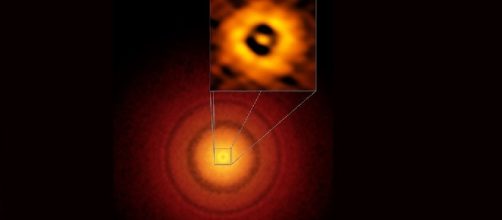A recent study reveals that young stars less massive than our sun can dissipate a surge of X-rays, reducing the span of lifetime of their circumstellar planetary forming disks. The study was made using information from Chandra X-ray Observatory and other telescopes. Scientists conducted this research on the TW Hydrae association.
TW Hydrae association
This is a collection of an approximate number of 30 young starslocated 150 light years from earth and with a shared age of 5-10 million years. The stars located in the TWA are of special interest, as their mass one tenth to one half the mass of the sun, age and proximity make them ideal for the study of the formation of circumstellar disks and the evolution of planetary systems.
Outflow of X-rays
The radiation of X-rays in the central region of the protostar disk increases the temperature and consequently generates photoevaporative winds, depleting its gas material. These types of X-ray evaporative winds have been observed in pre-main sequence stars, while very low mass stars-those that have not reached the pre-main sequence stage, show low levels of disk photo evaporation.
Young stars less massive than the sun
This types of stars can release a stream of X-rays in the vicinity of the innermost region of the protostar, causing a depletion of gas and dust in the circumstellar disk, dispersing gaseous mass and thus preventing the formation of matter in the form of planets.
Young stars one tenth the mass of the sun
This stars show minor activity in X-ray emission; therefore, they have preserved most of the mass it their disks, presenting a more appropriate environment for the formation of planets. Planet formation would produces empty spaces in parts of the disk.The study was conducted on two groups of stars; one with masses ranging from one third to one half the mass of the sun and the second group with masses one tenth that mass of the sun. It was found that more massive stars produce more X-rays in their disks than the less massive ones.
Due to this discovered action of depletion in the inner part of an accruing young star disk, it´s believed that a new revision of the development of star formation should be performed around the processes occurring in the early evolutionary lives of planets forming around low mass young stars.

